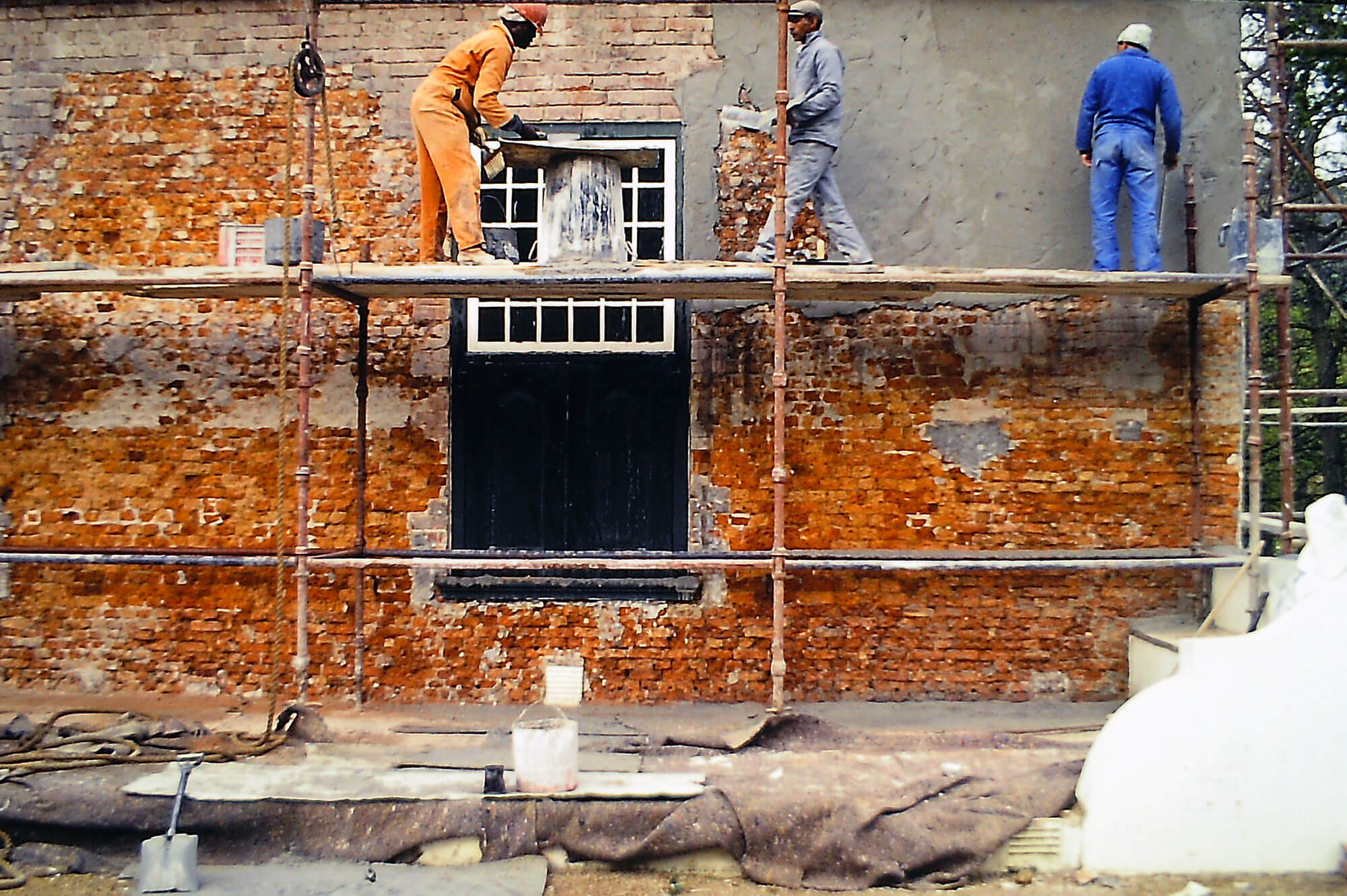Advertisement
Should we be looking to the past for ideas for alternative building methods to reduce our carbon footprint? It makes sense, because traditional, low-tech building methods are almost naturally low carbon-intensive.
Building from mud bricks is one possible solution, which led us to the historic buildings on the Groot Constantia Estate.
Living in a mud house
Jean Naude, CEO of Groot Constantia, who lives on the estate in a mud house called The Hope of Constantia, takes us through the pros and cons of living in a mud house.
‘Because clay is porous, it is a very effective isolating barrier to heat and cold, making it an energy-efficient building material,’ he says. ‘The thick walls retain the warmth when we use heating during winter, and they also absorb noise, making them very soundproof when compared to modern homes.
‘The walls are softer than those built with baked bricks, and as our home was built before damp coursing was the norm, we do have to guard against damp. This means we can’t use regular paint as the walls must be allowed to breathe, so every few years we whitewash.’
Rain is perceived as the biggest threat when building with clay, but Naude makes a valid point when he says, ‘Groot Constantia has a higher average rainfall than London, receiving 1,200mm a year, concentrated in winter, and yet here we are, still standing.’
Advertisement
What do the architects say?
Nellis Beyers of Revel Fox & Partners Architects and Planners agrees, saying that ‘earth construction is “green”, ecologically friendly and energy-efficient. This is why we are starting to see a renaissance in building with mud. One needs to understand the material; for instance, clay walls must have a roof over them or the top of the wall must be capped. Adding a small percentage of cement to a clay mix can strengthen it considerably.’
This is certainly worth looking into when you consider that clay is readily available and that the cost of a normal brick is around four rand, as opposed to about forty cents for an earth brick.
Beyers also noted that, when investigating the clay houses to be restored after the recent Wuppertal fires, the modern cement structures were all cracked, while the older clay walls remained intact – as was the case with the Manor House at Groot Constantia.
The Manor House at Groot Constantia
Built in 1685, it is the oldest building on the estate, designed in a late Dutch Renaissance style. A devasting fire in 1925 resulted in the entire roof collapsing, leaving just the blackened walls and gables intact. The historic wooden roof beams, lintels, doors and window frames were all destroyed. The original floor in the entrance hall depicting the pentagon shape of the Castle of Good Hope can still be seen.
It was restored in 1926 by architect FK Kendall. The restoration process provided an opportunity to examine the layout of the original building, and identify the extensive alterations and additions of the preceding centuries. Today the Manor House is a museum and a Provincial Heritage site.
The Cloete Cellar and Jonkershuis
The Cloete Cellar was built in 1791, and restored by Revel Fox & Partners in 1993, turning a historic, but disused shed into a space to showcase relics from the wine industry. In 2017 the interior was renovated and an elegant tasting room introduced.
At the Jonkershuis complex the cement plaster was removed to reveal the history of the original clay brickwork. Modern brickwork was identified and replaced with historically correct raw earth bricks. The plaster was reinstated with lime plaster and limewash that allow the walls to breath, expand and contract naturally.
Groot Constantia certainly represents a compelling case for building with mud.
As always, location is important
Clay sourced from the immediate area is ideal as the material will expand and contract to the same conditions. According to Beyers, the raw materials for earth bricks are easier to source in Gauteng and the Free State than in the other provinces. However, when planning a new development, a soil test to look for clay could be a money-saving investment.
Eco- and pocket-friendly
Beyers says that ‘clients are starting to enquire about greener building methods and materials, but not at double the price of traditional building costs. Clients are also wary of being guinea pigs for new methods.’ So mud or clay bricks should definitely be considered.
Mud houses have been around for hundreds of years, so there is no guinea pig issue to address, and unfired clay bricks are considerably cheaper, so the savings could be huge on a big construction project. And, by sourcing the clay from the area, transport costs are reduced.
What do you think?



